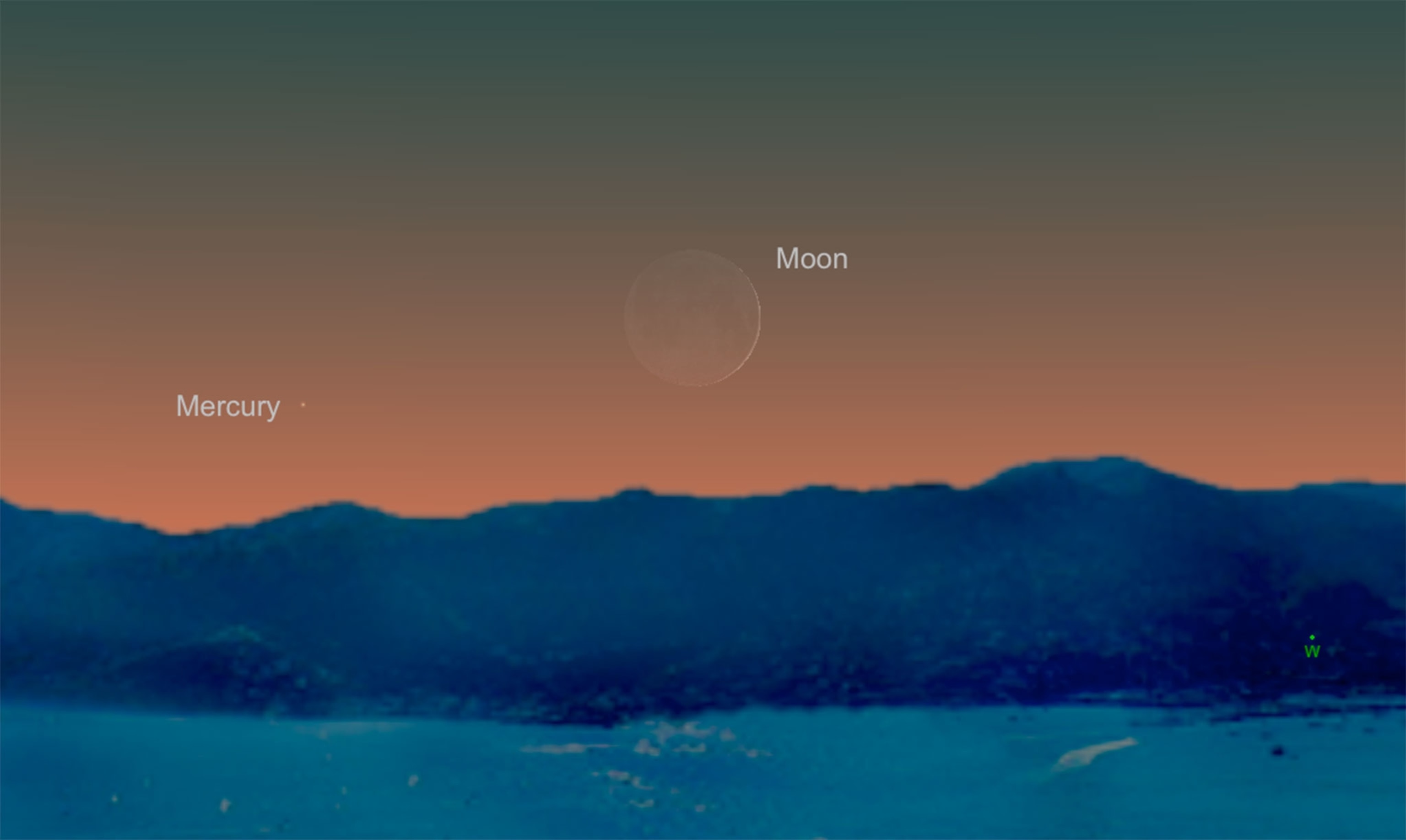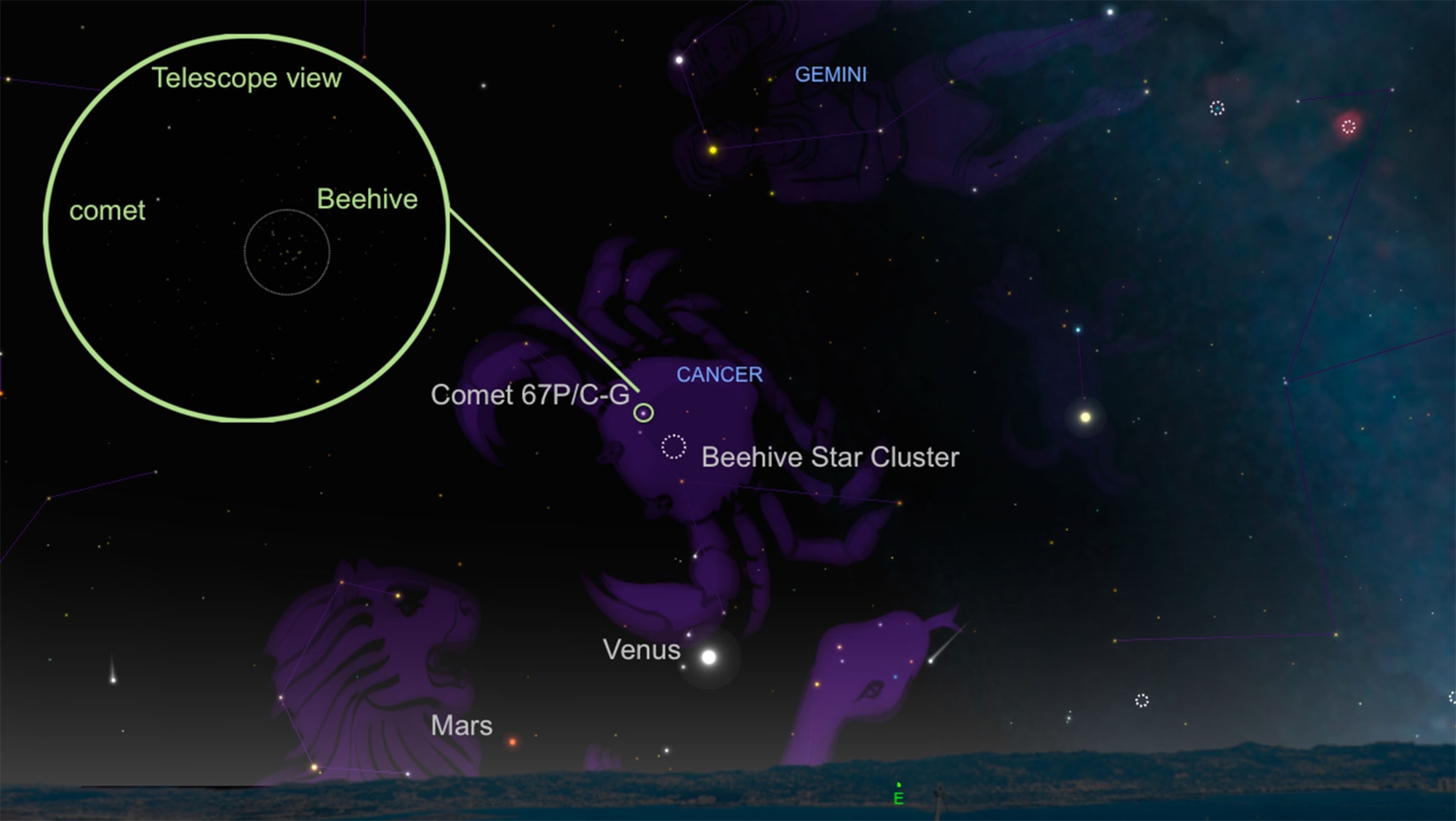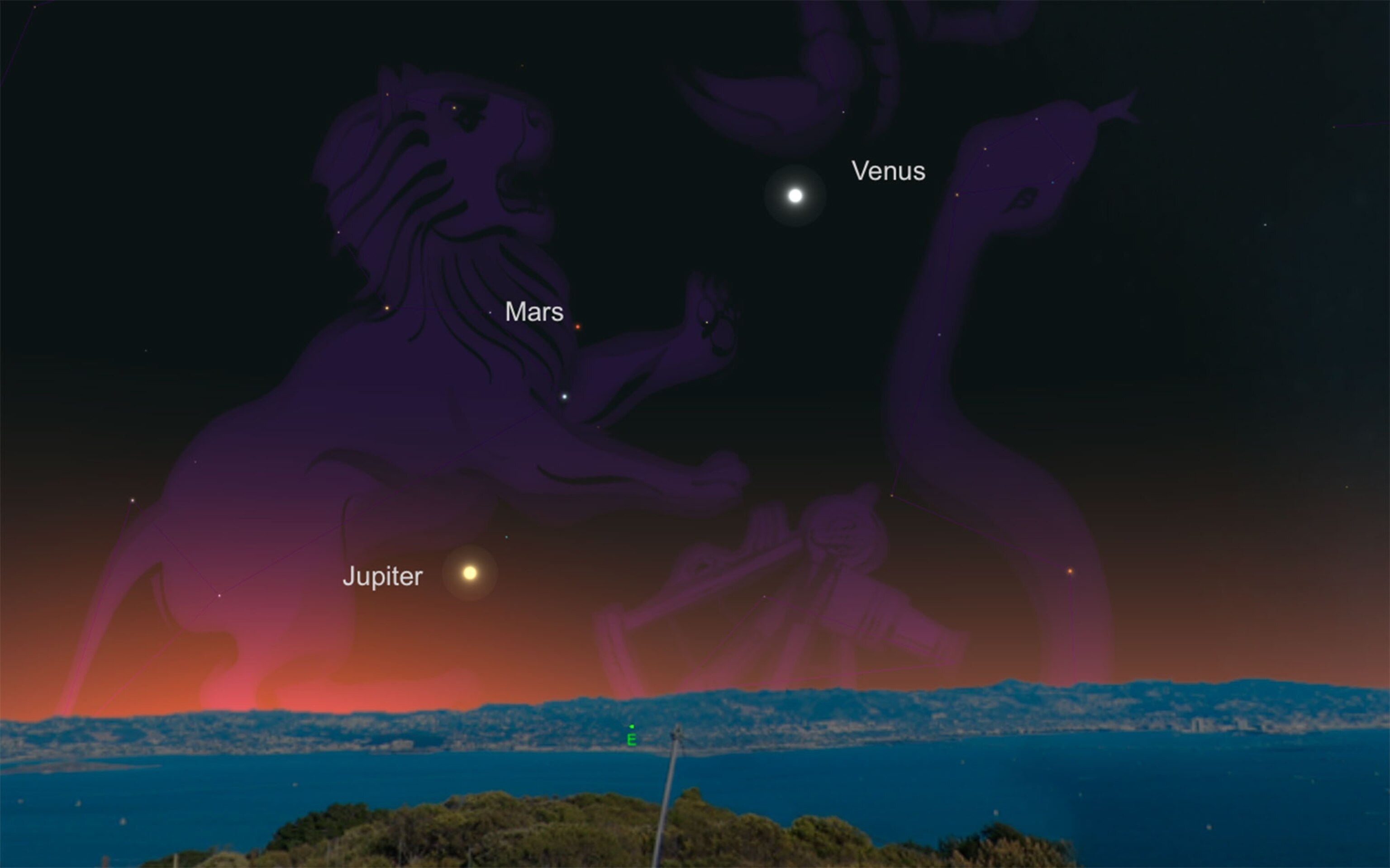
This Week's Night Sky: Famed Comet Buzzes Beehive
Comet 67P passes in front of a star cluster, and Jupiter poses with Mars and Venus.
Moon and Mercury. The razor-thin moon returns to the evening skies on Monday, joining Mercury and giving skywatchers a new observing challenge.
Just after sunset, look for the moon only a few degrees above the western horizon. Because of the glare from sunset, try using binoculars to pick out the lunar sliver, and then scan 7 degrees to its left for star-like Mercury. Observers at lower latitudes—closer to the equator—will be able to catch the cosmic pair higher in the sky, where they're easier to spot.

Rosetta’s Comet. For two nights starting on Wednesday, comet 67P/Churyumov-Gerasimenko will offer its best views to backyard telescopes thanks to its apparent flyby of the bright Beehive star cluster.
The comet is famous, of course, because of the European Space Agency’s Rosetta spacecraft that is currently orbiting it. The icy interloper is racing away from the sun at nearly 74,000 miles per hour (120,000 kilometers per hour) and is about halfway between the orbits of Earth and Mars.
The comet is shining feebly, at only magnitude 12, and is best seen from a dark location using a medium to large telescope with at least a 10-inch mirror.

Hunting down its location will be made much easier, though, since it is gliding only 2 degrees north of the Beehive Cluster, also known as Messier 44 in the constellation Cancer, the crab.
The two objects may look close together, but they are at vastly different distances, with the star cluster 577 light-years away and the comet only 165 million miles (266 million kilometers) from Earth.
Moon and Saturn. Face towards the low western horizon about a half hour after sunset on Friday to check out the waxing crescent moon paying a visit with Saturn.
This lord of the rings will be less than 3 degrees south of the moon this evening. Use binoculars to show off the pretty pairing, or train a telescope on Saturn to reveal its stunning rings. It’s amazing to think that its rings extend out to 75,000 miles (120,000 kilometers) from the planet’s cloud tops yet are less than 100 meters thick.

Wait a day, and by Saturday evening the moon will form a pretty celestial triangle with Saturn on its right and the orange star Antares below it.
Planet Trio. Early risers on Sunday can catch Jupiter posing with Venus and Mars above the eastern horizon.
About 30 minutes to an hour before sunrise, try spotting Jupiter closest to the horizon with Mars and Venus perched above that king of planets. Make sure to find a viewing spot with a clear, unobstructed view of the horizon. Also keep tabs on this cosmic trio in the coming weeks, as the planets will slowly converge for a set of spectacular close encounters in October.
Clear skies!





